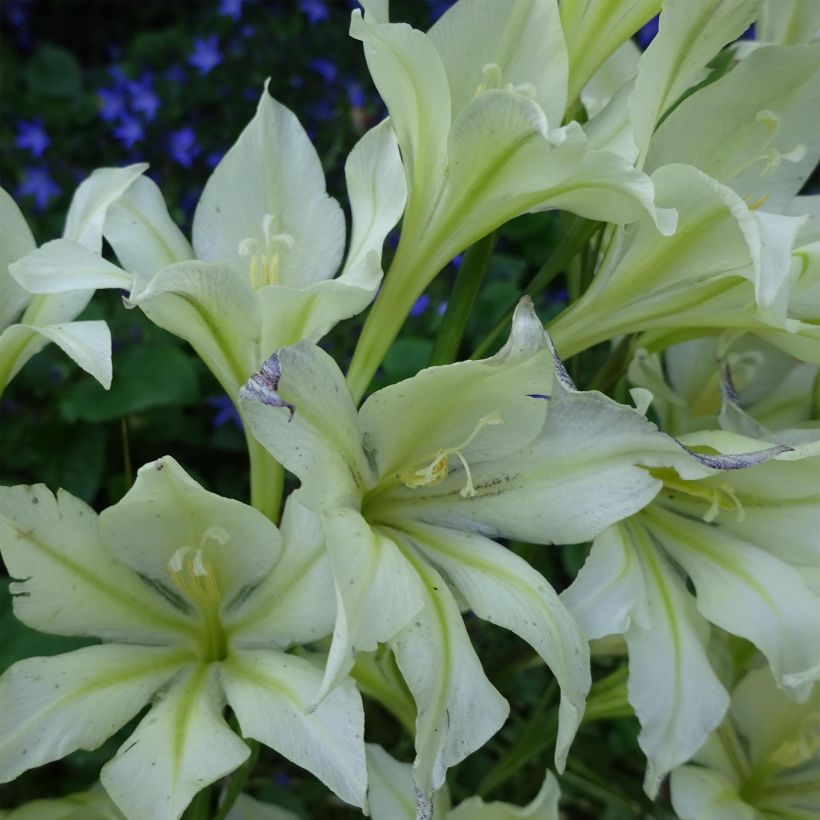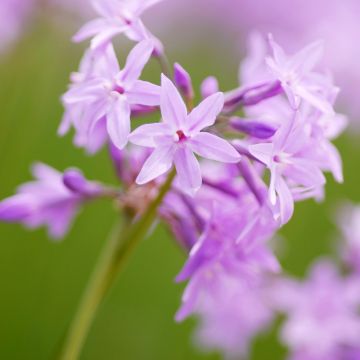

Gladiolus tristis var. concolor - Marsh Afrikaner
Gladiolus tristis var. concolor - Marsh Afrikaner
Gladiolus tristis var. concolor
Marsh Afrikaner
I have received the three corms, I'm not sure if they will flower this year as they were very small, more like bulblets. But I remain confident.
François, 12/02/2024
Special offer!
Receive a €20 voucher for any order over €90 (excluding delivery costs, credit notes, and plastic-free options)!
1- Add your favorite plants to your cart.
2- Once you have reached €90, confirm your order (you can even choose the delivery date!).
3- As soon as your order is shipped, you will receive an email containing your voucher code, valid for 3 months (90 days).
Your voucher is unique and can only be used once, for any order with a minimum value of €20, excluding delivery costs.
Can be combined with other current offers, non-divisible and non-refundable.
Why not try an alternative variety in stock?
View all →This plant carries a 6 months recovery warranty
More information
We guarantee the quality of our plants for a full growing cycle, and will replace at our expense any plant that fails to recover under normal climatic and planting conditions.
Would this plant suit my garden?
Set up your Plantfit profile →
Description
The Gladiolus tristis var. concolor is a rare pale yellow flowering botanical gladiolus that comes from the flooded meadows of South Africa. There, it is commonly called "lady of the night" due to its flowering that perfumes the air from dusk onwards. This bulbous plant produces slender flower stems adorned with numerous graceful and delicate flowers, resembling pale yellow to cream-coloured lilies. Their fragrance perfumes the nights of June and the bouquets. Semi-hardy, this bulb can be grown in a pot or, like other gladioli, in most regions. On the Mediterranean coast, it can withstand winter in the ground, flower in spring, and enter dormancy in the dry soil during summer. A beautiful plant for collectors!
The Gladiolus tristis var. concolor belongs to the iris family. In its natural habitat, it grows in open meadows, sometimes marshy but drying out in summer. When conditions are favourable, it naturalises quickly. It is a perennial herbaceous plant with a storage organ called a corm, which is a kind of globular, brown bulb. The plant starts growing in autumn, taking advantage of the rains, flowers in spring, and goes dormant during summer. The foliage consists of long, thin, linear, sheathing, spiralled leaves, upright and then trailing, measuring about fifty centimetres. They are dark green, with parallel veins. Flowering occurs early, in May-June depending on the region. Floral stems, reaching a height of up to 70 cm (28in), emerge from the foliage. Each stem bears several 8 cm (3in) diameter flowers with a long tubular calyx. The flowers are composed of 6 broad tepals that taper at the tip, all of the same size. They are very pale yellow, with a slightly deeper yellow median zone, sometimes tinged with violet. The fragrance of the flowers is sweet and more pronounced at night. This nectar-rich flowering is highly visited by pollinating insects. The corm of the Gladiolus tristis 'Concolor' can withstand brief frosts of around -5°C (23°F) to -6°C (21.2°F), in a well-drained soil during winter. It requires dry soil after flowering, in summer.
The Gladiolus tristis var. concolor is an extremely graceful gladiolus, but its cultivation is somewhat delicate. Growing it in pots allows it to be protected from cold in winter and humidity in summer. Well adapted to moderately harsh Mediterranean climates and appreciating moist soils in winter, it naturalises very easily there. It can form large colonies that blend perfectly with grasses like pennisetum, eragrostis, or stipa in a naturalistic setting. Also consider simple annuals like cornflowers or love-in-a-mist. This plant, with its natural charm that is far removed from the stiff and slightly kitschy appearance of its Dutch cousins, deserves more than a row of stakes at the edge of a vegetable garden: plant it in groups of 20 bulbs next to botanical daylilies and linarias, for example. Elaeagnus ebbingei will provide a dark and neutral background that will enhance them while protecting them from the wind.
Gladiolus tristis var. concolor - Marsh Afrikaner in pictures


Plant habit
Flowering
Foliage
Botanical data
Gladiolus
tristis
var. concolor
Iridaceae
Marsh Afrikaner
South Africa
Other Gladioli
View all →Planting and care
Plant the corms of Gladiolus tristis 'Concolor' in the spring, in well-drained soil and in a sunny or partially shaded position, well sheltered from the wind. Bury them under 8 to 10 cm (3 to 4in) of soil. They appreciate horn and dried blood, but fear fertilisers and manure. Ensure that the plants do not lack water during the growth and flowering period. After flowering, when the foliage dries up, the corms should remain dry.
In warm and mild climates, the bulbs can be planted in the autumn, in rich and light soil: they will then bloom earlier and go dormant in the summer (this is the case in our regions of the Mediterranean coast). Gladiolus tristis can withstand short freezes of around -6°C (21.2°F). In cold regions, the bulbs should be dug up before the first frosts. Store them indoors in a well-ventilated and frost-free room.
You can also grow them in pots in a conservatory or a lightly heated greenhouse, which you will protect from the cold (10 bulbs for a pot of 20 to 22 cm (8 to 9in)). Water them from October onwards and throughout the winter, until the end of spring. When the foliage starts to dry up in the summer, move the pots under cover to protect them from the rain.
Planting period
Intended location
Care
Planting & care advice
-
, onOrder confirmed
Reply from on Promesse de fleurs
Similar products
Haven't found what you were looking for?
Hardiness is the lowest winter temperature a plant can endure without suffering serious damage or even dying. However, hardiness is affected by location (a sheltered area, such as a patio), protection (winter cover) and soil type (hardiness is improved by well-drained soil).

Photo Sharing Terms & Conditions
In order to encourage gardeners to interact and share their experiences, Promesse de fleurs offers various media enabling content to be uploaded onto its Site - in particular via the ‘Photo sharing’ module.
The User agrees to refrain from:
- Posting any content that is illegal, prejudicial, insulting, racist, inciteful to hatred, revisionist, contrary to public decency, that infringes on privacy or on the privacy rights of third parties, in particular the publicity rights of persons and goods, intellectual property rights, or the right to privacy.
- Submitting content on behalf of a third party;
- Impersonate the identity of a third party and/or publish any personal information about a third party;
In general, the User undertakes to refrain from any unethical behaviour.
All Content (in particular text, comments, files, images, photos, videos, creative works, etc.), which may be subject to property or intellectual property rights, image or other private rights, shall remain the property of the User, subject to the limited rights granted by the terms of the licence granted by Promesse de fleurs as stated below. Users are at liberty to publish or not to publish such Content on the Site, notably via the ‘Photo Sharing’ facility, and accept that this Content shall be made public and freely accessible, notably on the Internet.
Users further acknowledge, undertake to have ,and guarantee that they hold all necessary rights and permissions to publish such material on the Site, in particular with regard to the legislation in force pertaining to any privacy, property, intellectual property, image, or contractual rights, or rights of any other nature. By publishing such Content on the Site, Users acknowledge accepting full liability as publishers of the Content within the meaning of the law, and grant Promesse de fleurs, free of charge, an inclusive, worldwide licence for the said Content for the entire duration of its publication, including all reproduction, representation, up/downloading, displaying, performing, transmission, and storage rights.
Users also grant permission for their name to be linked to the Content and accept that this link may not always be made available.
By engaging in posting material, Users consent to their Content becoming automatically accessible on the Internet, in particular on other sites and/or blogs and/or web pages of the Promesse de fleurs site, including in particular social pages and the Promesse de fleurs catalogue.
Users may secure the removal of entrusted content free of charge by issuing a simple request via our contact form.
The flowering period indicated on our website applies to countries and regions located in USDA zone 8 (France, the United Kingdom, Ireland, the Netherlands, etc.)
It will vary according to where you live:
- In zones 9 to 10 (Italy, Spain, Greece, etc.), flowering will occur about 2 to 4 weeks earlier.
- In zones 6 to 7 (Germany, Poland, Slovenia, and lower mountainous regions), flowering will be delayed by 2 to 3 weeks.
- In zone 5 (Central Europe, Scandinavia), blooming will be delayed by 3 to 5 weeks.
In temperate climates, pruning of spring-flowering shrubs (forsythia, spireas, etc.) should be done just after flowering.
Pruning of summer-flowering shrubs (Indian Lilac, Perovskia, etc.) can be done in winter or spring.
In cold regions as well as with frost-sensitive plants, avoid pruning too early when severe frosts may still occur.
The planting period indicated on our website applies to countries and regions located in USDA zone 8 (France, United Kingdom, Ireland, Netherlands).
It will vary according to where you live:
- In Mediterranean zones (Marseille, Madrid, Milan, etc.), autumn and winter are the best planting periods.
- In continental zones (Strasbourg, Munich, Vienna, etc.), delay planting by 2 to 3 weeks in spring and bring it forward by 2 to 4 weeks in autumn.
- In mountainous regions (the Alps, Pyrenees, Carpathians, etc.), it is best to plant in late spring (May-June) or late summer (August-September).
The harvesting period indicated on our website applies to countries and regions in USDA zone 8 (France, England, Ireland, the Netherlands).
In colder areas (Scandinavia, Poland, Austria...) fruit and vegetable harvests are likely to be delayed by 3-4 weeks.
In warmer areas (Italy, Spain, Greece, etc.), harvesting will probably take place earlier, depending on weather conditions.
The sowing periods indicated on our website apply to countries and regions within USDA Zone 8 (France, UK, Ireland, Netherlands).
In colder areas (Scandinavia, Poland, Austria...), delay any outdoor sowing by 3-4 weeks, or sow under glass.
In warmer climes (Italy, Spain, Greece, etc.), bring outdoor sowing forward by a few weeks.



















































